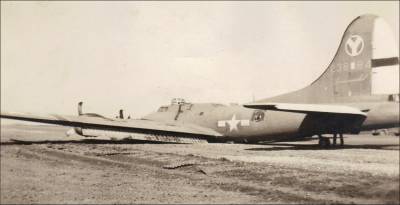Human Errors: B-17 Landing Crashes During WW II

Photo credit Sgt. Lloyd Merrifield submitted by his son Tim Merrifield
During World War II, the Boeing B-17 “Flying Fortress” had a series of runway crashes caused by the landing gear retracting when they touched down.
Accident investigators blamed these incidents on pilot (or human) error, as there were no obvious mechanical failures.
And it wasn’t only B-17 “Flying Fortresses” that had the problem. There were reports of pilots of P-17 "Thunderbolts" and B-25 "Mitchells" making the same mistake.
Obviously, no pilot would deliberately retract the landing gear upon touching down onto a runway. So why was this happening? Perhaps it was fatigue from flying long missions causing the pilot’s attention to wander when they realized they were almost home.
The Military asked Alphonse Chapanis, a psychologist, to investigate this behavior. Chapanis immediately noticed that the accidents only happened to certain planes and not others. There were thousands of Douglas C-47 "Skytrain" transport planes being flown, but their pilots never suffered from such inattention.
After inspecting the cockpits of the different planes the cause became clear. On B-17s the controls for the flaps and undercarriage were next to one another. They also had the same style of handle. Pilots who retracted the undercarriage when the wheels were on the ground had actually intended to retract the flaps. They just pulled the wrong lever!
In the C-47 “Skytrain” the two controls were very different and positioned apart from each other.
Once he identified the cause, Chapanis developed an equally simple solution. Circular rubber disks were stuck to the levers for the undercarriage and triangles were stuck to the levers for the flaps. When a pilot touched the rubber he felt the difference and the crashes stopped. This particular shape-coding of cockpit controls is still used today.
The pilots were well aware of which lever to pull. It was “human error” that caused the mistake. But laying the blame on the pilots wasn’t ever going to solve the problem.
Perhaps you can find an equally elegant way in which to apply these concepts to prevent or reduce, human errors in your workplace.

